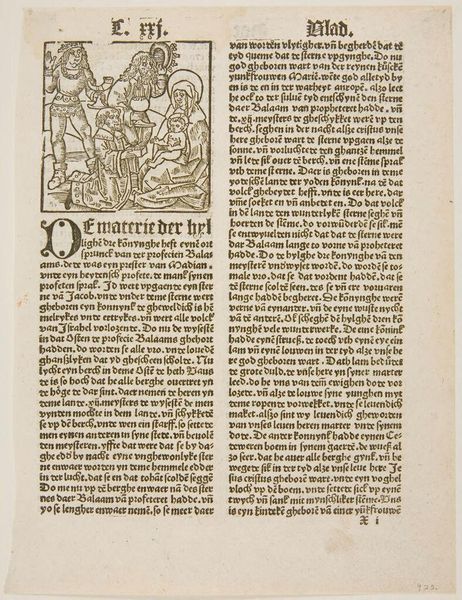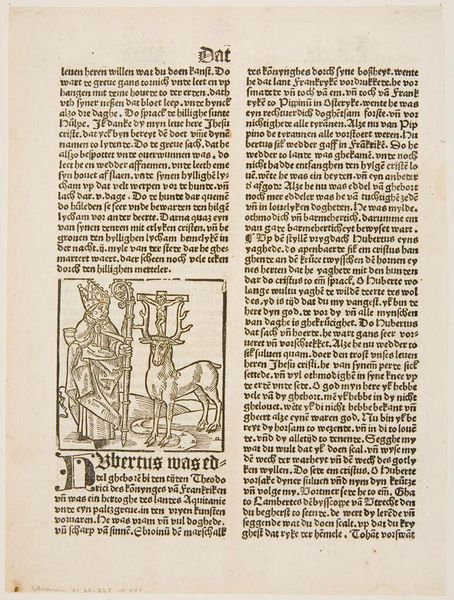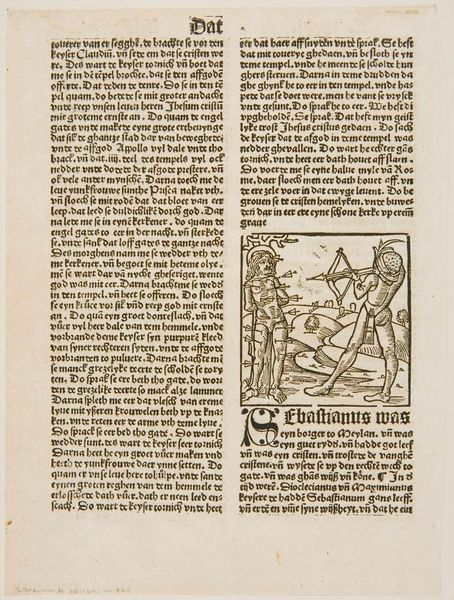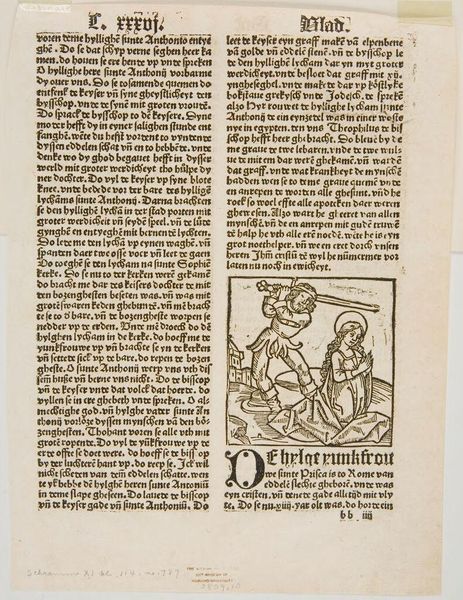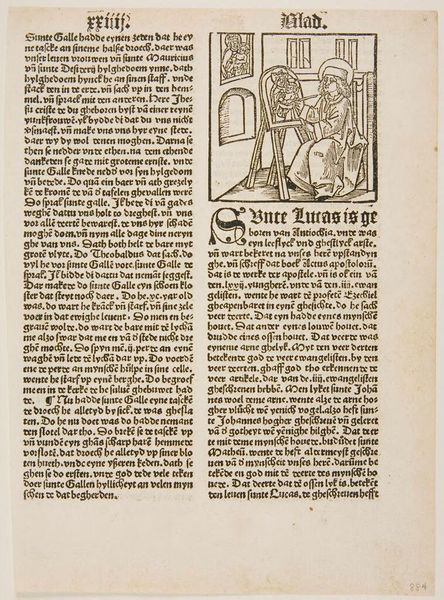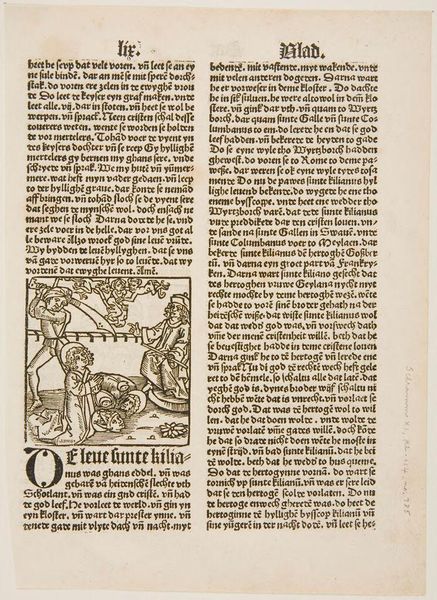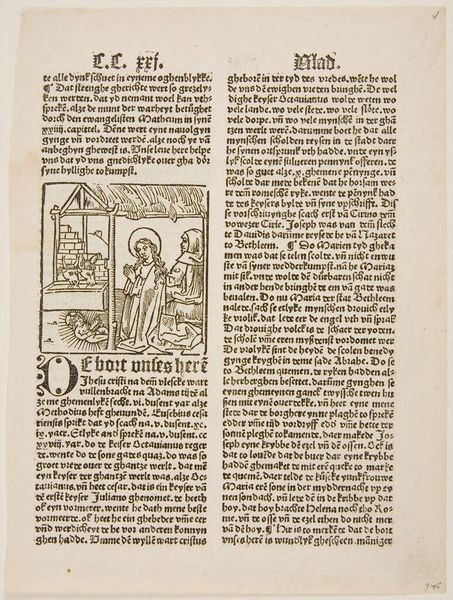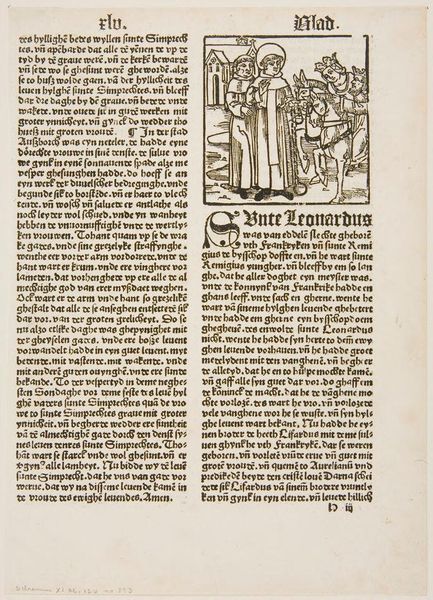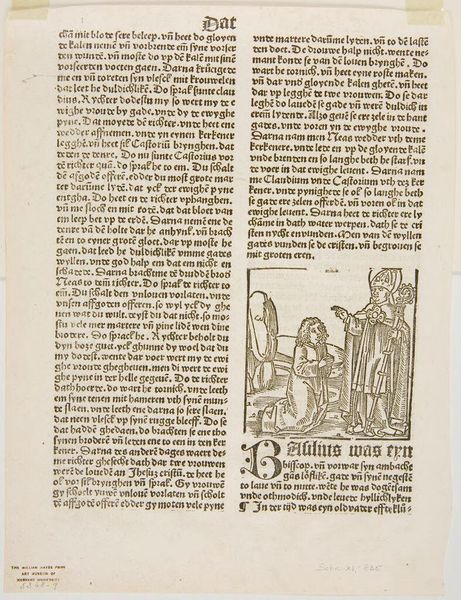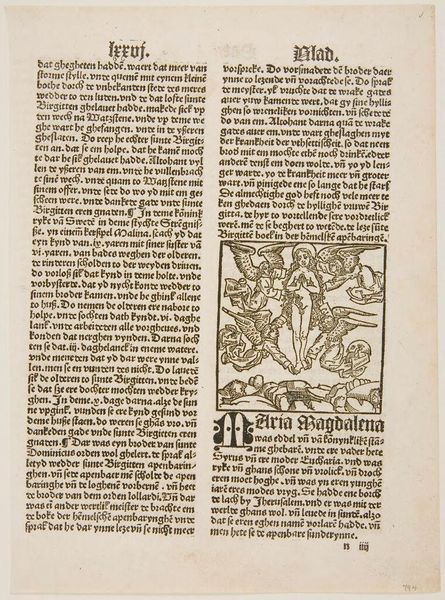
Copyright: CC0 1.0
Curator: Here we have an anonymous woodcut, likely from the late 15th or early 16th century, depicting the Massacre of the Innocents. Editor: It’s… unsettling. The sharp lines and stark contrast create a scene of intense brutality, even in miniature. Curator: Indeed. The composition is quite striking, isn't it? The artist has positioned the executioner with a raised sword, towering over the kneeling mother, creating a visual hierarchy of power and vulnerability. Editor: Yes, the formal elements amplify the emotional impact. The rigid posture of Herod on his throne in the back contrasts sharply with the chaotic action in the foreground. Curator: The historical context is crucial. This image likely served as a cautionary tale, reminding viewers of the dangers of unchecked power and the importance of faith in the face of adversity. It circulated widely in printed books. Editor: The use of line creates a sense of claustrophobia, as if the figures are trapped within the confines of the woodcut itself. You can almost feel the weight of their despair. Curator: Exactly. It's a potent example of how art can convey complex emotions and narratives, even through seemingly simple means. Editor: It really makes you think about the power of art to confront viewers with uncomfortable truths.
Comments
No comments
Be the first to comment and join the conversation on the ultimate creative platform.
